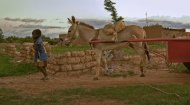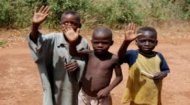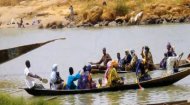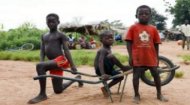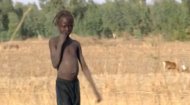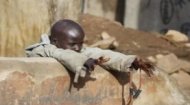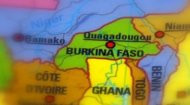|
A pivotal moment in the nation's history came in 1983 with the rise of Captain Thomas Sankara. A charismatic and revolutionary leader, Sankara renamed the country Burkina Faso in 1984, meaning "Land of Incorruptible People," and embarked on an ambitious program of social and economic reforms. His vision emphasised self-reliance, anti-imperialism, environmental protection, and women's rights, earning him the moniker "Africa's Che Guevara." Though his tenure was cut short by assassination in 1987, Sankara's legacy continues to inspire many, both within Burkina Faso and across the African continent, as a symbol of integrity and revolutionary idealism. Following Sankara's death, Blaise Compaoré ruled for 27 years, maintaining a degree of stability but also facing accusations of authoritarianism and corruption. His attempt to amend the constitution for a third term ignited a popular uprising in 2014, leading to his ousting. Since then, Burkina Faso has grappled with transitions marked by ongoing political flux and, more recently, a deepening security crisis that has profoundly impacted the nation's trajectory. Burkina Faso's social profile is a mosaic of over 60 distinct ethnic groups, each contributing to the nation's cultural tapestry. The largest group, the Mossi, predominantly inhabit the central region around the capital, Ouagadougou. Other significant groups include the Fulani (Peulh), Gourmantché, Bobo, Lobi, and Sénoufo, among many others. This ethnic diversity is reflected in a multitude of languages, with French serving as the official language, but local languages such as Moore (Mossi), Dioula, and Fula are widely spoken.
Burkinabè culture is especially renowned for its artistic expressions. Music and dance are integral to daily life, with instruments like the kora (a 21-stringed harp-lute), balafon (xylophone), and djembe drumming creating infectious rhythms. Traditional mask-making, bronze casting, and intricate textile weaving are also testaments to the country's rich artisanal heritage. Hospitality, communal responsibility, and respect for elders are deeply ingrained values, shaping social interactions and ensuring that communities pull together in times of need. While urbanisation is accelerating, particularly in cities like Ouagadougou and Bobo-Dioulasso, strong family ties and community networks remain the bedrock of Burkinabè society. The economic profile of Burkina Faso is predominantly agrarian, with agriculture employing the vast majority of the population. Cotton is the primary cash crop and a significant export, earning the country the nickname "White Gold." Other important agricultural products include shea nuts, which are processed into shea butter, and staple cereals like sorghum, millet, and maize, crucial for food security. Livestock rearing also plays a vital role, particularly among the Fulani communities. In recent decades, the mining sector has emerged as a crucial driver of economic growth. Gold is the country's main mineral export, attracting foreign investment and significantly contributing to national revenue. Zinc and manganese are also exploited, hinting at further untapped mineral potential. However, the reliance on commodity prices for both cotton and gold makes the economy vulnerable to global market fluctuations. Despite these resources, Burkina Faso remains one of the world's least developed countries. Its landlocked position poses significant logistical challenges for trade, increasing transportation costs and hindering access to international markets. Inadequate infrastructure, limited access to energy, and a nascent industrial base further constrain economic diversification. Climate change, manifesting as recurrent droughts and unpredictable rainfall, severely impacts the predominantly rain-fed agricultural sector, leading to food insecurity. The country heavily relies on foreign aid and remittances from Burkinabè working in neighbouring countries, particularly Côte d'Ivoire. Efforts are underway to promote small and medium-sized enterprises, invest in education and healthcare, and enhance regional integration through organisations like ECOWAS, but progress is often slow and hard-won amidst a challenging environment. Burkina Faso is currently confronting profound challenges that threaten its stability and development, chief among them being an escalating security crisis as the country has become a frontline in the Sahel region's fight against extremist violence. Since 2016, armed groups linked to Al-Qaeda and ISIS have launched frequent attacks, particularly in the northern and eastern regions, leading to widespread displacement, loss of life, and the closure of schools and health centres. This insecurity has created a severe humanitarian crisis, with millions of internally displaced persons (IDPs) struggling for basic necessities and protection. Beyond security, climate change poses an existential threat. Burkina Faso is highly vulnerable to desertification, recurrent droughts, and increasingly unpredictable rainfall patterns, which severely impact its agrarian economy and exacerbate food insecurity. Poverty remains pervasive, with a significant portion of the population living below the poverty line, a situation worsened by conflict and climate shocks. Compounding these issues are challenges related to governance, including political instability, which has seen two military coups in 2022 alone, and persistent issues of corruption. |
Burkina Faso Profile |
Burkina Faso Profile |
Burkina Faso Profile | Burkina Faso Profile |
Facts and figures about HIV in Burkina Faso where 10% of the entire population is infected with the virus.
More >
Read all the latest news and current events from Burkina Faso online in our Burkina Faso news page.
More >

|
The country also faces significant public health concerns, with high rates of malaria, malnutrition, and limited access to adequate healthcare facilities, particularly in remote areas. Education, vital for long-term development, is severely disrupted by the conflict, leaving hundreds of thousands of children out of school. Despite these formidable obstacles, the Burkinabè people demonstrate remarkable resilience and adaptability, supported by ongoing efforts from the government and international partners to address these crises, restore peace, and foster sustainable development. Despite the prevailing security challenges that have impacted the tourism sector, Burkina Faso possesses a wealth of captivating tourist attractions and unique cultural experiences for those able to explore its rich landscape. For nature enthusiasts, the country boasts several national parks and wildlife reserves. Arly National Park and sections of the 'W National Park' (shared with Niger and Benin) offer glimpses of West African wildlife, including elephants, antelopes, various bird species, and occasional predators. A remarkable natural wonder is the Sindou Peaks, a stunning collection of sandstone formations sculpted by wind and rain into fantastical shapes, offering breathtaking vistas and opportunities for exploration. The Ruins of Loropéni, a UNESCO World Heritage site, are another highlight. These ancient stone wall enclosures, dating back over a thousand years, represent the remains of a significant trans-Saharan trade network and the mysterious Lobi civilisation. Cultural immersion is readily available. The bustling Gorom-Gorom Market in the Sahel region is a vibrant spectacle, drawing traders and pastoralists from across the region, offering a rich sensory experience and a glimpse into traditional Burkinabè life. In Ouagadougou, visitors can explore the Grand Mosque, the Cathédrale de l'Immaculée-Conception, the National Museum, and the Village Artisanal, where local craftspeople create and sell traditional art. Bobo-Dioulasso, the second-largest city, charms with its impressive Grand Mosque in Sudanese style, its old city quarter, and its sacred fish pond. Nearby Banfora is home to the picturesque Karfiguéla Falls and Hippos Lake, where visitors can spot hippos in their natural habitat. Burkina Faso is also famed for its vibrant cultural scene, hosting internationally renowned festivals such as FESPACO (the Pan-African Film and Television Festival of Ouagadougou) and SIAO (the International Arts and Crafts Fair of Ouagadougou). These events showcase the nation's artistic prowess and provide platforms for cultural exchange. Child poverty stands at 47% and a quarter of all children in the country are underweight. Whilst having significant gold reserves, its economy is underdeveloped with cotton production being the main form of income for most Burkinabes, as they are called. As with many poorer African nations, illiteracy rates are high; in 2018, adult literacy rate for Burkina Faso was 41.2 %. rising to just 52.5 % for young people while the figures drop for females, reflecting poorer enrolment and engagement for girls who are required to provide care and for chores around the family home. Only 35% of all eligible primary school age children are enrolled at school and just 8% actually attended secondary school (although figures are far higher in urban areas.) Over 100,000 children there orphaned by AIDS and, in one year alone, it was estimated that 18% of the country's entire population were orphans or abandoned children. Burkina Faso is ranked in 186th place out of 193 countries and territories in 2025 in terms of life expectancy, literacy, access to knowledge and the living standards of a nation. Find out more about the nation in our profile pages above.
|
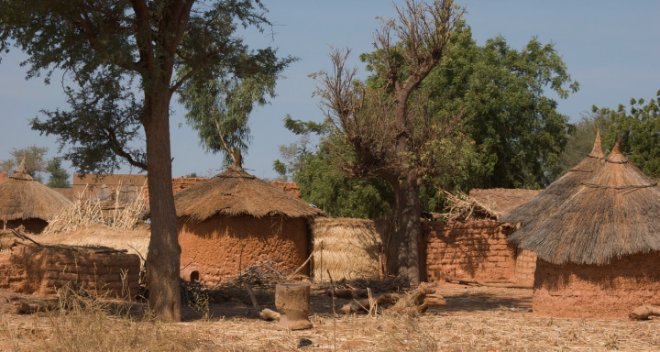
 Religious coexistence is a hallmark of Burkinabè society. Islam is the predominant religion, followed by Christianity (Catholic and Protestant denominations), and traditional African religions, which often blend harmoniously with the Abrahamic faiths. Festivals and ceremonies, both religious and secular, are vital to community life, fostering strong social bonds and preserving ancestral customs.
Religious coexistence is a hallmark of Burkinabè society. Islam is the predominant religion, followed by Christianity (Catholic and Protestant denominations), and traditional African religions, which often blend harmoniously with the Abrahamic faiths. Festivals and ceremonies, both religious and secular, are vital to community life, fostering strong social bonds and preserving ancestral customs.
